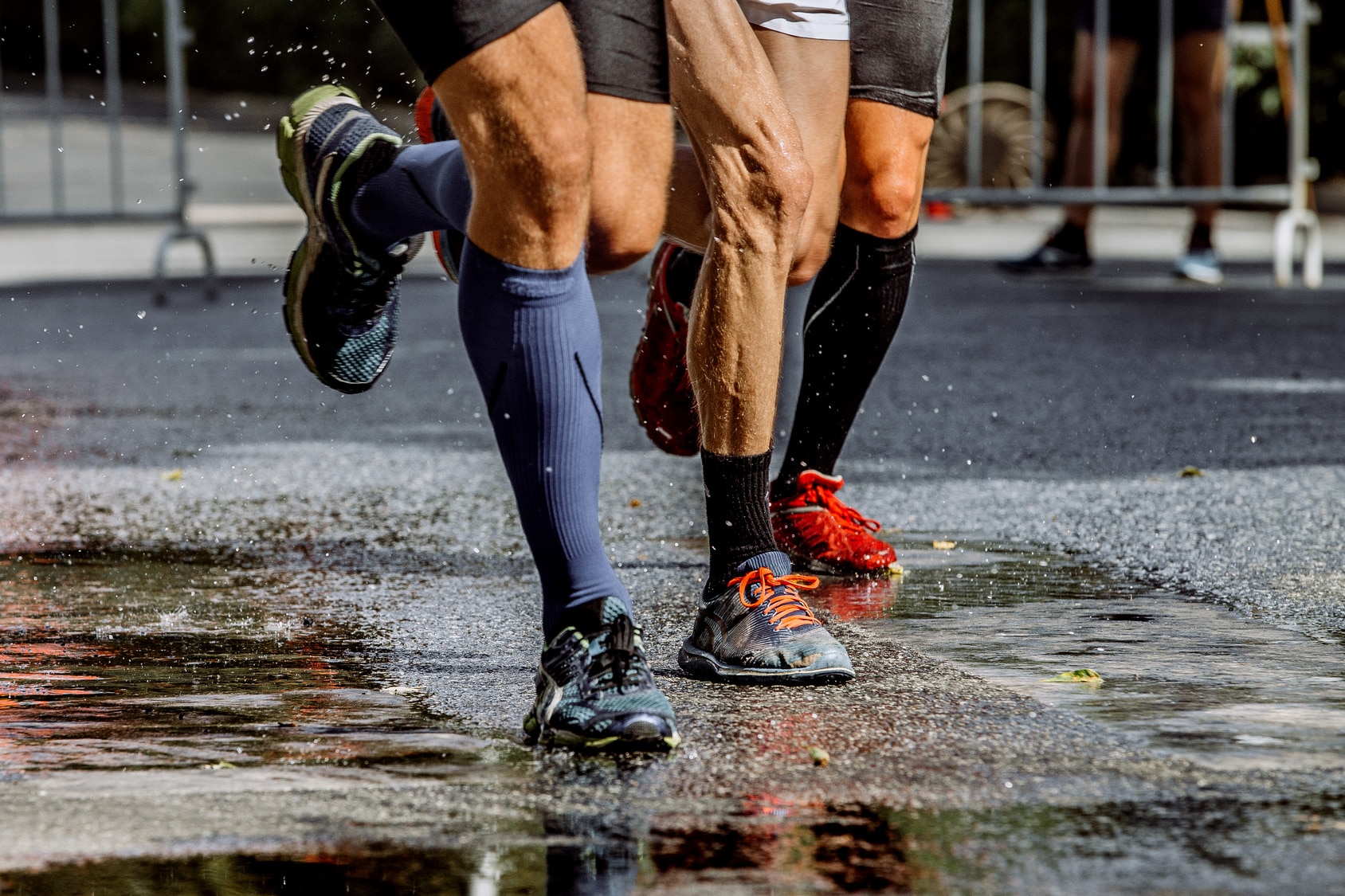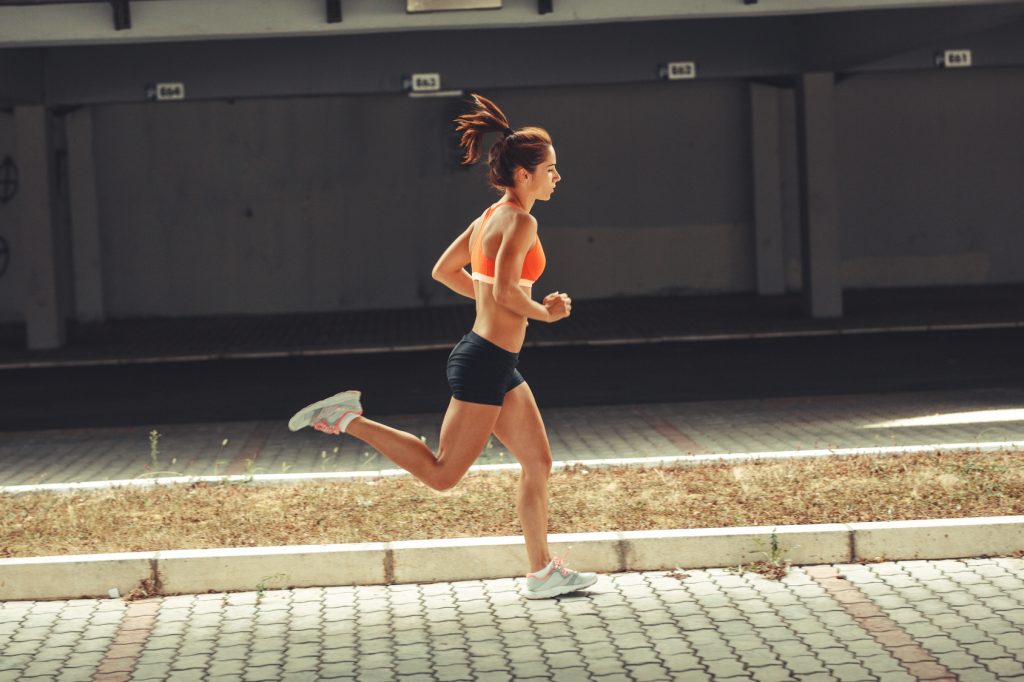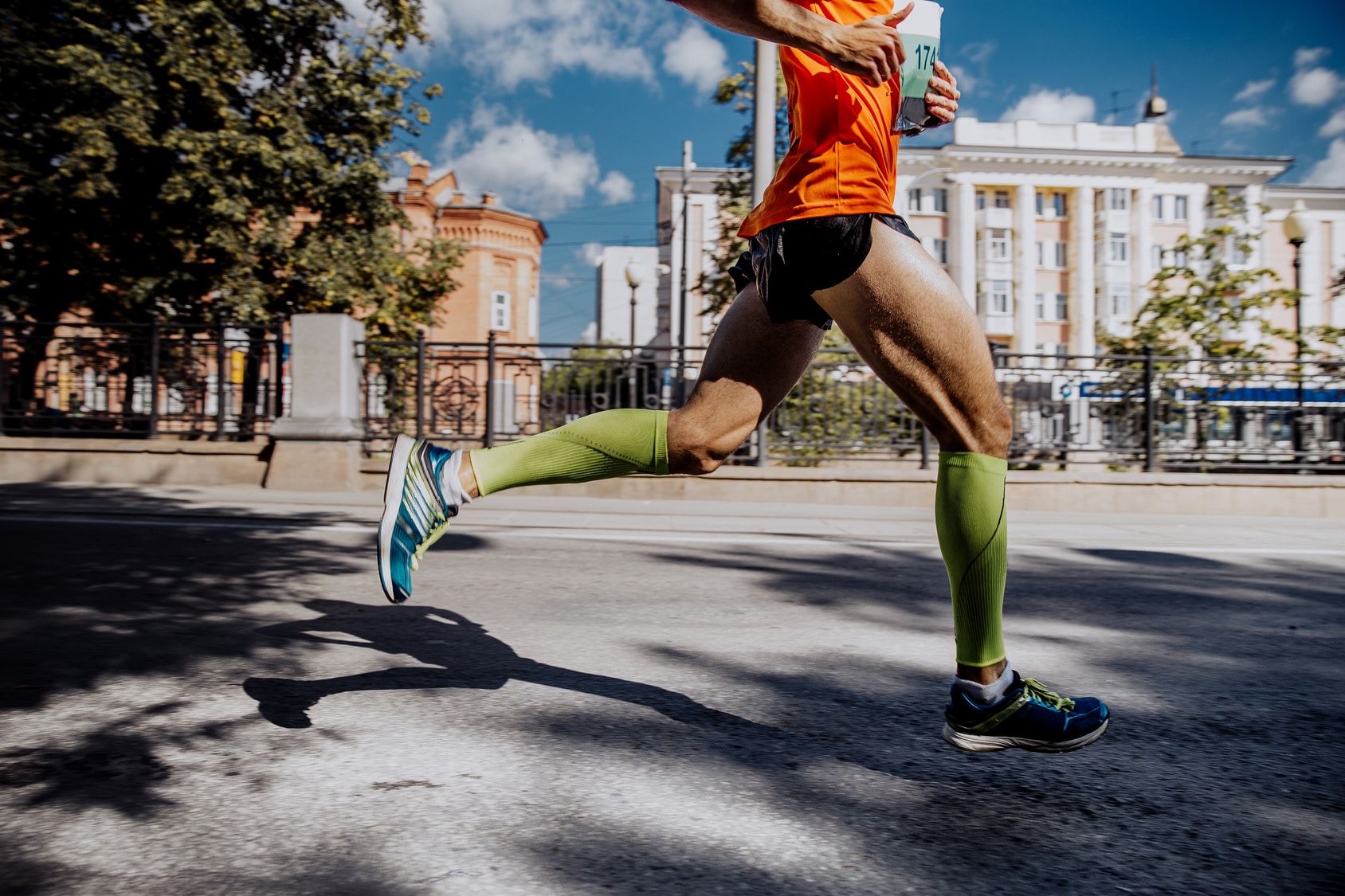Running socks?
Yes, these are socks made specifically for runners.
What makes them different from your typical casual socks is that they are designed to keep your feet dry and comfortable while running for prolonged periods of time.
When you run, especially if you sweat a lot (who doesn’t), it’s crucial to equip your feet and your shoes with socks that are comfortable, functional, durable, even fashionable (if you are into that).
Socks For Running – The Importance of The Right Choice
Socks are not a second-thought accessory.
In fact, picking the right running socks is just as important as choosing the right shoes.
Not only can the proper socks improve your running performance, but can also help keep your feet healthy and happy.
An ill-fitting pair of socks can result in toenail problems, bursitis, blisters, infections, and other serious foot issues that may compromise your running.
And you don’t want any of that.
Whether you are going for a short jog around the block, or are conquering long, treacherous trails, the right pair can set the stage for a comfortable, pain-free workout experience.
In short, running sucks without the right socks.
And here is the good news.
Buying socks for running is not rocket science.
That’s why today, dear reader, I’m spilling the beans on proper running socks selection.
In this post, you’ll find a list of handy tips and practical guidelines to help you make the right sock choice.
Use the following tips to help you choose the right socks for running that will help your feet dry and comfortable so you can ensure consistent running success.
So, are you excited?
Then here we go.
How to Choose The Best Running Socks
Athletic socks come in a variety of fabric types, sizes, thicknesses, and cushioning features.
These are the main things to consider when selecting the right running socks.
Consider the following elements when choosing your running socks.
Additional Reading – Here’s the full guide running compression socks.
1. Say No to Cotton
The most important factor to consider when cherry-picking socks for running is, hands down, the material.
As a rule of thumb, steer clear of cotton the entire time (just like your running clothes, see this post).
Why?
Cotton is spongy and absorbent.
Once your feet get wet (whether due to sweat or after stepping in a puddle), they’ll stay wet, and the moisture won’t get “wicked away.”
And here is the real bad news.
Running in damp socks sets the ideal breeding ground for bacteria (nasty smells), and blisters (nagging injuries).
And you don’t want either.
Not only that, running in the winter with cotton socks will make you feel damp and cold.
And that makes for a miserable run.
Sure, cotton is cheaper than technical moisture-wicking synthetic materials, but the proper technical running attire is well worth the extra buck.
Functional Materials for the Socks
Our feet are a work of wonder.
They contain about 250,000 sweat glands.
Put simply, our feet sweat a lot.
That’s why you need running socks made with technical materials, lightweight and equipped with excellent sweat wicking properties.
High-performance socks are specifically designed for runners—they pull moisture away from the skin, and won’t let it turn into an abrasive material that will rub against your feet—all of this helps keep your feet relatively comfortable and dry.
Ideal running socks are made from synthetic materials such as acrylic, CoolMax, and polyester.
Look for these in the ingredient list whenever you are purchasing new socks.
Some high-performance socks are also designed with a mesh venting system.
Also, consider looking for fabrics with anti-odor properties to keep your feet clean and smelling fresh.
Got Any Blisters?
If you’re prone to blisters, consider doing any of the following to limit friction between your feet and the inside of the shoes:
- Opt for anti-blister socks that have a double layer system; or
- Wear a second layer sock for extra blister protection; or
- Go for thicker socks.
2. The Right Size Of Running Socks
When running, it’s essential to have athletic socks that fit properly.
A pair that’s too large or too small can bunch up and sag, and won’t provide you with the right cushioning that is required.
It also should not irritate your skin, nor leave a substantial imprint, particularly in the calves or ankles.
So, as a rule of thumb, avoid socks that bunch up and slip your shoes.
Anytime you have something rubbing against your skin, especially if your skin is damp, you run a high risk of getting painful blisters.
And you don’t want that.
Your socks must be a perfect fit, especially under the arch of the foot and around the heel.
They shouldn’t slide around.
To make sure you have the right size, make sure that the heel portion of the socks perfectly lands on your heel without stretching.
Also, your running socks should be worn fairly tight to the skin, but not so tight that they overstretch or restrict the movement of your toes.
4. The Many Lengths Of Running Socks
In general, socks usually come in four different lengths.
Which length you go for depends on the weather, training intensity, and your own personal preferences.
Here the main types:
Knee length—usually compression running socks that sit just below the knee to cover the entire calf
Crew length—these come up to the calf.
Anklet—these sit right above the ankle, as the name implies.
Socklet—these sit just above the shoe line.
5. Thickness of Fabric
Just like thickness and size, running socks are also designed with different levels of padding.
Different athletic sock materials and styles will provide different levels of cushioning.
Which type of sock you choose depends, as always, on your personal preference.
No suit fits all.
Thick Vs Thin Running Socks
Thick socks typically have extra padding in the heel and toes, which offers superior underfoot comfort, more cushioning, and blister protection, but might be a hurdle when trying to fit into a new pair.
In general, thicker socks are most appropriate for cooler seasons.
On the other hand, the thinner socks are lighter and tend to have a better road feel, but might result in excessive friction when running, especially if you’re prone to blisters.
Generally, thin socks are ideal for hotter seasons.
What’s The Best Running Socks Choice?
Whether you choose a well-padded sock, or something more minimal, in the end, it all boils down to your personal preference.
For instance, super thin socks might not feel comfortable for some individuals, whereas a super thick pair might affect the fit and comfort of the shoes.
But all in all, choose socks that have at least a degree of padding at all points of contact around the foot.
Proper socks should offer a degree of cushioning at impact zones.
These are typically most used and abused parts of your feet.
Try it with the shoes
Keep in mind that the thickness of your sock affects the fit of your shoes, requiring you to go up at least a half shoe size to accommodate for the additional cushioning.
So, when you are trying out a new pair of shoes, make sure to do so with the socks you are going to be running in.
6. Running Compression Socks
According to the current theory, compression socks may speed up recovery and improve performance.
Of course, there is still much debate about this, but it’s something I think you should give it a try and see for yourself.
I believe that it works.
I don’t know exactly how effective compression socks really are when it comes to performance and recovery, but I do enjoy putting them on both during and after my runs—especially long runs.
Compression socks are designed with gradual compression, which improves blood flow to the muscles.
This is believed to lessen muscle fatigue and speed up recovery following a workout.
Some high-tech running socks are designed to mildly compress your muscles to enhance blood circulation, reducing fatigue, and speed up recovery time—all of which can help you run farther for longer and with less fatigue, and soreness.
Also, according to theory, compression socks may reduce your chances of injury and ward off muscle soreness and swelling.
Just make sure they fit right.
Compression socks shouldn’t feel too tight.
After all, their primary purpose is to aid blood circulation to the muscles rather than hindering it.
To ensure that you have the right fit, get a tape measure, measure around the broadest part of your ankle (this measurement is often called the circumference), then measure the widest part of your calves.
Next, while sitting on a chair with your knees bent at a 90-degree angle, size up your calf length by measuring the distance from one finger below the bend in your knees to the ground.
Last up, match your results against the size guide and recommendations on the individual socks’ pages.
Also, you might need to experiment with several brands and styles before settling on one that feels the most comfortable for you.
How to Choose The Best Running Socks – The Conclusion
choosing the right socks for running is, in the end, a question of personal preference. That’s why you need to experiment with different socks lengths and sizes to find the type of socks that works the best for you in different seasons and conditions.
My best advice is to get a variety of socks. By doing so, you’ll be better prepared for any circumstance or weather conditions that come your way.



